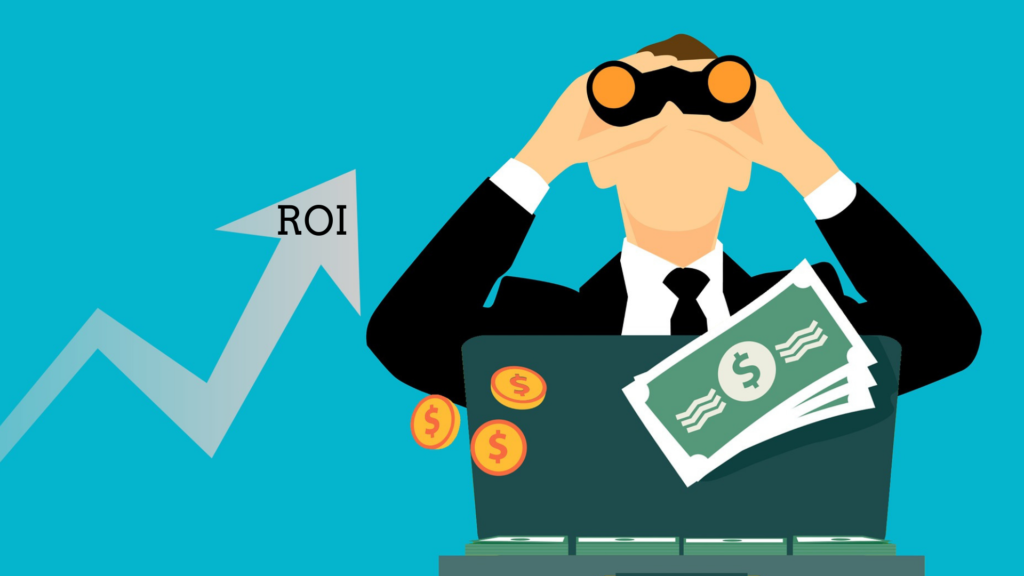ROI from your Blog Strategy – When Will You See It?
It’s understandable for a business owner to expect results shortly after they roll out a marketing campaign. While it’s true that some campaigns create buzz and bring in business almost immediately (or so it seems), other marketing strategies need more time to build but can have the strongest ROI.
A blog is a perfect example. It takes considerable time and effort to set up and maintain a blog, but many business owners have found that a blog is one of the most effective ways to increase their brand awareness and position their company as a leader in their industry.

How long will it take to start seeing results from your blog strategy? The short answer is – it depends on the strategy and the benchmarks you’re using to measure your content marketing ROI.
Unfortunately, there is no standard timetable, nor is there a quick and easy way to convert clicks and views to cold, hard revenue generation, so the success rate is different for everyone.
But let’s give it a try and take a closer look at what exactly determines your blog’s ROI.
A blog strategy’s success relies on a few key elements:
- Frequency of your blog posts
- Quality of your blog content
- Level of reader engagement
- How you promote your content
- Tracking key performance indicators
1. Posting Frequency
Regular content creation like blogging can be overwhelming, so break it down into manageable pieces. Work with your content marketers or sit down with your calendar or project management software and come up with a writing and posting schedule. You don’t have to post every day, but you should post a minimum of once a week.
If you are loaded down with other projects or have several deadlines coming up, write up a few posts at one time and schedule them so you’re not trying to fit blogging into your jam-packed schedule. Or enlist your other team members to write a few posts to add some different voices to the mix.
But no matter your posting schedule, stick to it. One of the biggest mistakes a business makes is to abandon their blogging schedule because they either no longer have time to write the posts, or they’re not seeing the ROI in the timeframe they anticipated. A blog is one digital marketing strategy that can take some time to build, but be patient and stay with it.
2. Quality Blog Content
Rather than rely on how often you post, focus instead on what you’re posting. Blogging is a great way to establish yourself as a thought leader in your industry.
A well-crafted post should be free of mechanical and grammatical errors (if your post is riddled with typos, that doesn’t exactly speak highly of your attention to detail or mastery of writing basics) and contain appropriate SEO keywords so your blog gets high rankings in search engine results.
Above all, you should write posts on topics your customers care about and include strong calls to action so the reader is compelled to act (think of phrases like “Call now!” or “Seating is limited!” so readers pick up the phone, go online to register or complete a task, or comment on your post as instructed).
For instance, if you are a field service business like a plumber or HVAC technician, your posts will likely focus on topics like tips for taking care of your home’s HVAC systems, reducing energy costs, or prepping your home for the next season. Topics like Fashion Tips for the First Day of School or Winter Pet Care Tips are not the most appropriate for this type of blog.
3. Robust Reader Engagement
One of the biggest benefits of digital marketing is the ability to engage with readers in real-time. From testimonials to online reviews and social media comments, customers have more influence over buying decisions (whether their own or someone else’s) than ever before.
Business representatives need to keep this in mind during every customer interaction. From a blogging perspective, the “comments” section is just another way to encourage customers to give feedback on the topic.
Understand you’re casting a wider net with your blog and reaching a much wider readership than, say, an email newsletter that only reaches a target audience (subscribers), but always respond to each comment respectfully and never, ever push your products or services on anyone who gives feedback (unless it’s obviously spammy, in which case your best move is to just delete the comment).
 4. Content Promotion
4. Content Promotion
Your ROI will be low to nonexistent if your customers don’t know your blog exists. Don’t let that happen—get the word out! Share links to your blog posts on your social media platforms and email marketing pieces (newsletters, promotions, email blasts) and dedicate space on your company’s website to your blog.
It can take time for readers to find your blog, and yes, it can take even longer to build a following and convert some of those readers into customers.
But it’s an important step in the long-term sales process. A blog is an effective lead generation method, so keep it updated, timely, and in front of your audience in all marketing materials. You never know when a casual reader will become a customer!
5. Tracking Key Performance Indicators
If you want to use hard data to measure the success of your blog, use a tool like Google Analytics to gather all the statistics you may need. Google Analytics tracks things like your top-read posts and where your traffic is coming from.
This data is useful in different ways. Not only can you track your blog readership to determine its impact on your overall marketing bottom line, but it can help you with site optimization and social media activity for higher conversion rates.
When did you see ROI on your blog? How did you measure your “success”?


